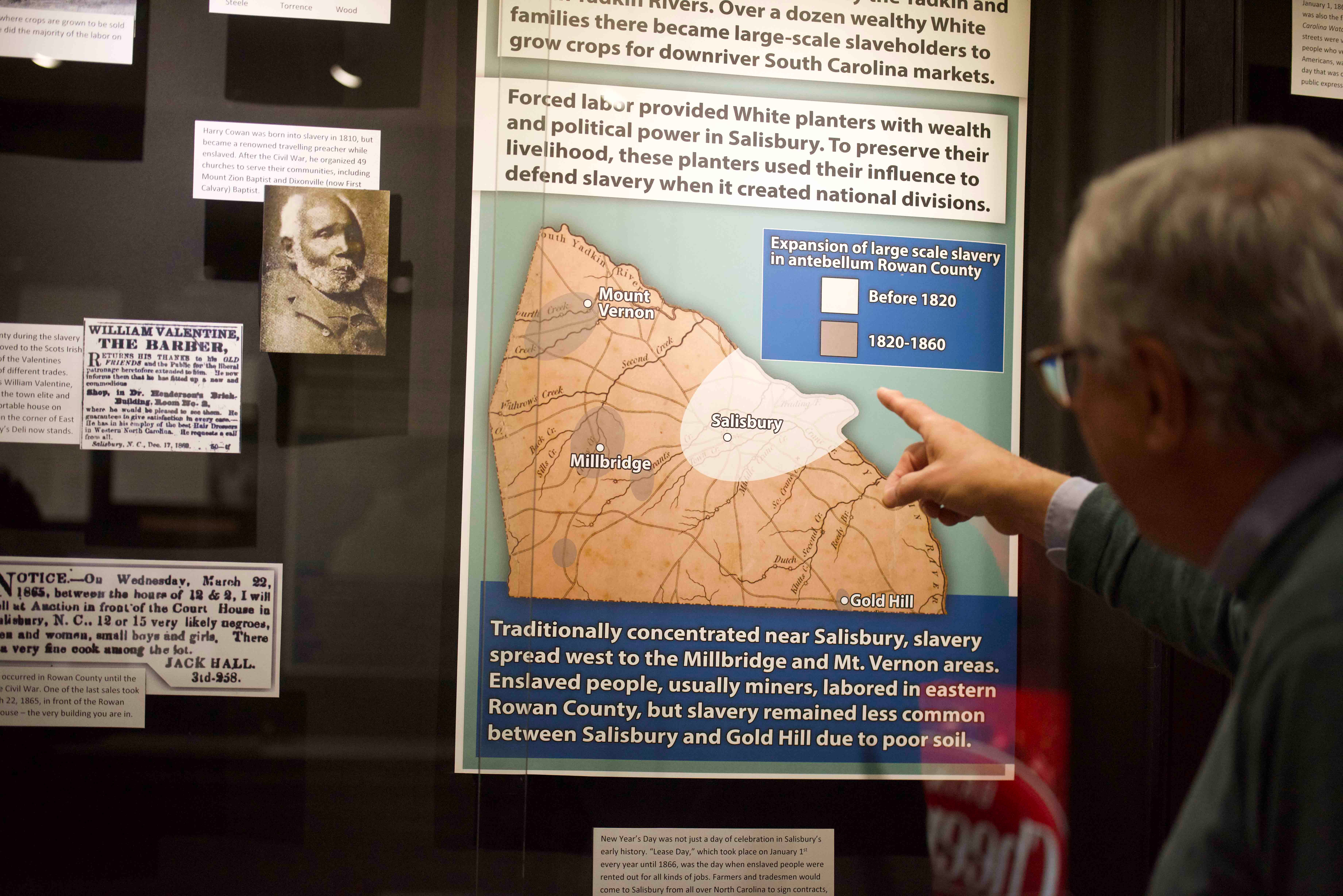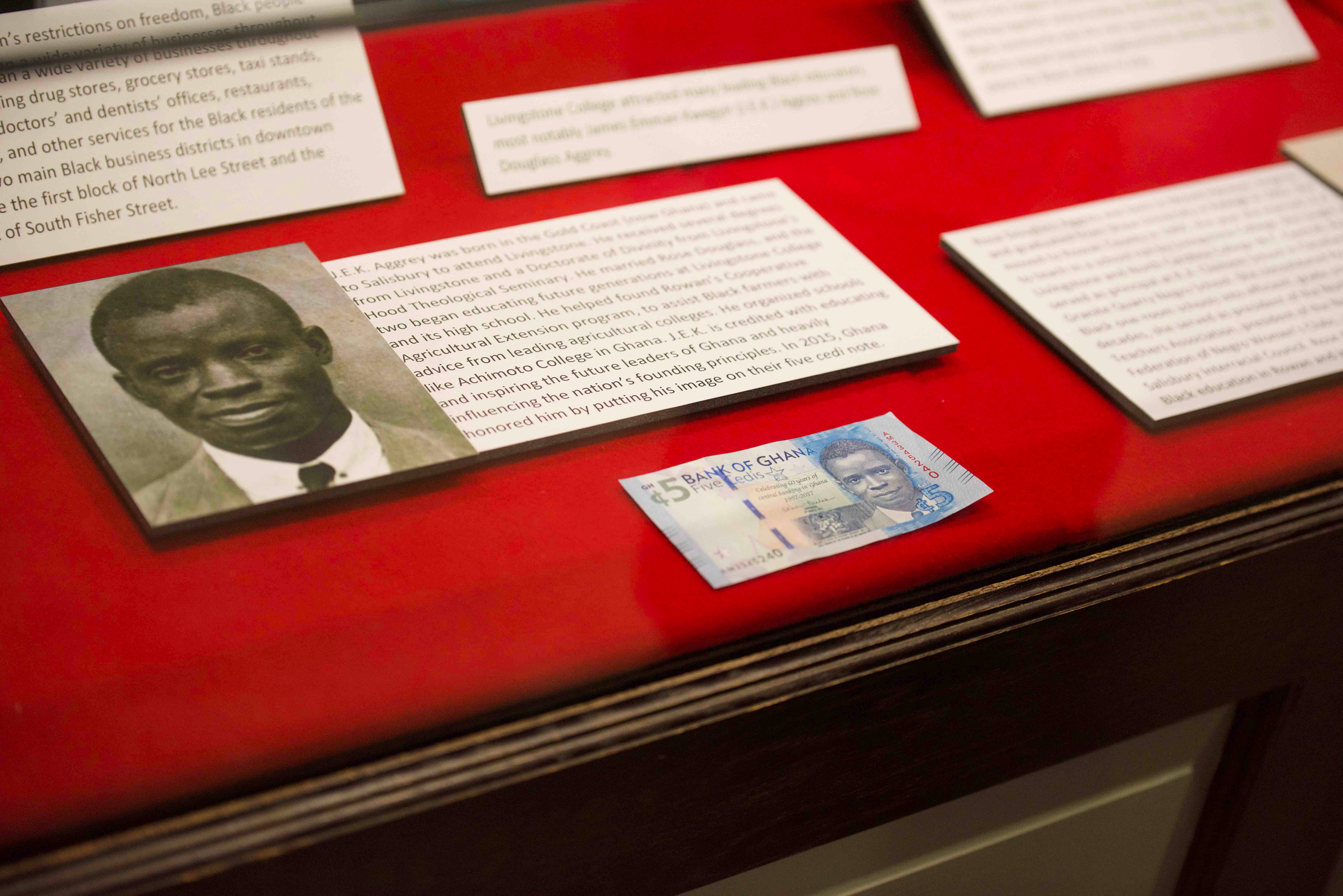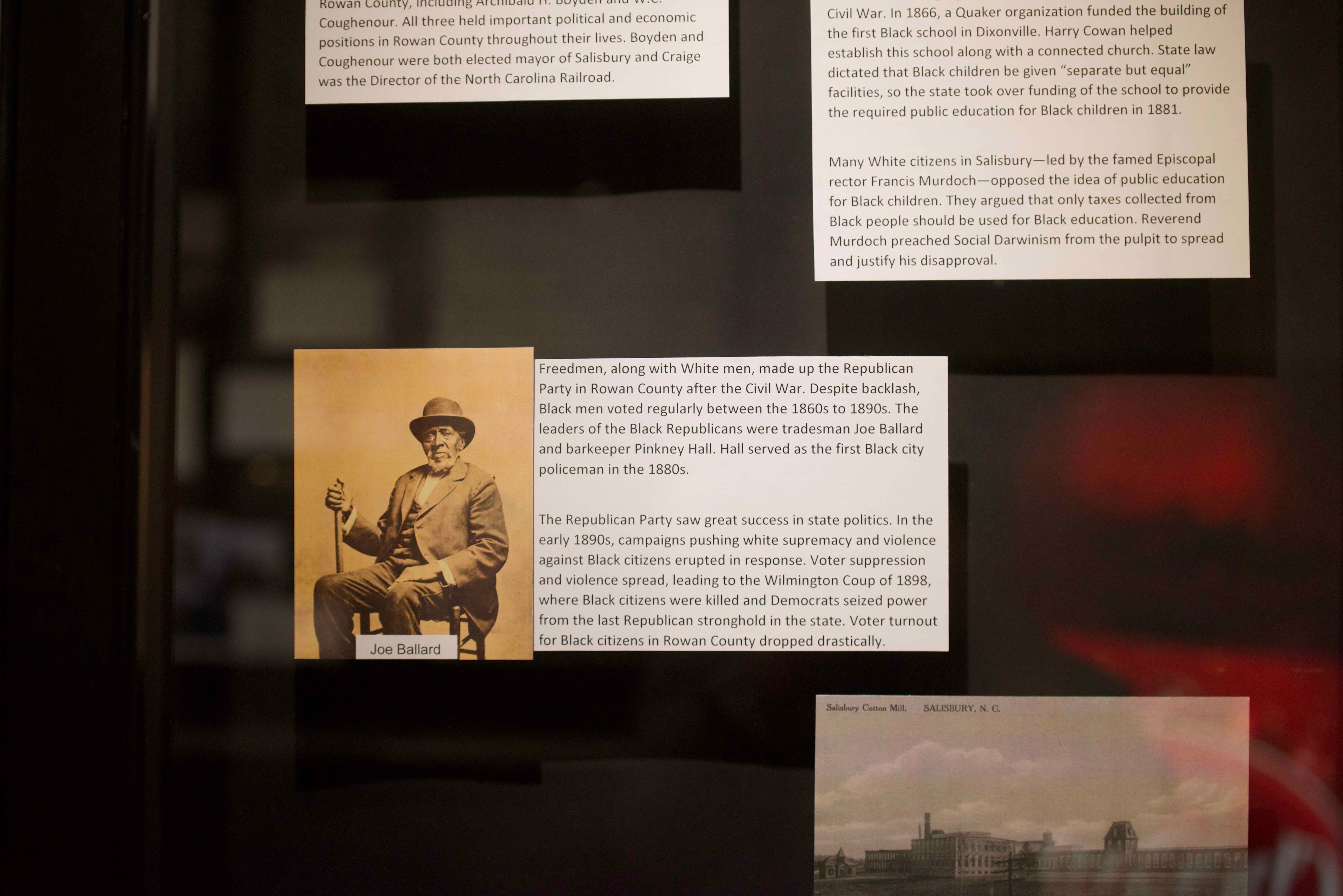Rowan Museum’s Black history exhibit examines slavery in county, will become part of permanent display
Published 12:06 am Sunday, February 20, 2022
SALISBURY — In 2019, Gary Freeze began a dive into the legacy of slavery in Rowan County and found some surprising results.
St. Luke’s Episcopal Church hired the history scholar and retired Catawba College professor to perform some work for its Beloved Community project. The project has a few focuses, including racial justice and healing. The church asked Freeze to examine its own history with slavery by taking the list of the names of its members prior to the U.S. Civil War and answer the question “did they own slaves?”
“The answer was yes, emphatically,” Freeze said.
Freeze attributed the large number of slave owners to the fact that most prominent, wealthy people in Salisbury were members of the church at the time.
“We underestimated how wealthy these guys were,” Freeze said.
Freeze said members of the church were the majority of large-scale slave owners in the county. That remained the case until a few decades before the Civil War — when slave ownership began to spread out.
Freeze said he began looking at slave ownership in pre-war member logs of other local churches as well. After he retired from Catawba College, he began reading old newspapers from Salisbury from 1876 to 1910 and was taking notes as if he were to write a county history.
He made notes on anything involving race relations and references to Black people. He said the two research projects became the nucleus for what would become the newest exhibit at Rowan Museum.
“For many years, the museum has had February Black history exhibits,” Museum Executive Director Aaron Kepley said. “And then once the exhibit came down, it kind of went away. So my idea with this exhibit is we have it in a special place right now, but after about six months of it being up we’re going to bring it into the main museum and it’s going to be part of the overall narrative of our exhibits.”
Then, instead of only having an exhibit special to the month, the museum will have more Black history throughout the year and it will bring some of those stories into the history.
Kepley said some people have been shocked by how much information the museum has brought back to light.
Freeze said much of the information was already publicly accessible and recorded in newspapers, but local Black residents were not necessarily in headlines.
“You have to go look at the small things,” Freeze said.
There were three big surprises to Freeze in his research:
• Slavery was concentrated in the area around Salisbury and Spencer. Freeze said there has been a general assumption the slave population lived in the western part of the county and not the eastern section, which is not true.
• Rowan County was so invested in slavery it was a regional hub for leasing slaves on annual contracts to labor throughout North Carolina. Freeze said he first discovered this in documents in Chapel Hill.
• Local Black residents created community and identity that was recorded, but those details have been forgotten. Freeze described how prominent Decoration Day was for decades following the Civil War. It was a Black commemoration of the efforts of Union soldiers to free people from slavery.
“There were speeches, parades and visits to the federal cemetery,” Freeze said.
Thousands of people came to the celebrations, which lasted for decades. It morphed into Memorial Day.
“Salisbury was a regional center for Black people to celebrate their emancipation and their freedom,” Freeze said.
The exhibit features an image the museum believes is of a Decoration Day in the early 1900s. It shows former Union prisoners who came back to Salisbury marching with Black participants as part of the celebration.
“You can’t tell the white story of Salisbury without telling the Black story, too,” Kepley said, noting the last major historical work on Rowan County was completed in 1953, a year before the Brown v. Board of Education Supreme Court decision.
Freeze said the history of African Americans in Rowan County in the 20th century has not been covered exhaustively yet, and that history is being examined.
Freeze said there is still much to learn about Rowan County history. Notably, he pointed to the rise of the populism movement in the 1890s and how little we know about how it impacted Rowan County.
“We know next to nothing about it,” Freeze said, adding he now knows the names of some populist leaders but knows little about how much there was international business investment in Salisbury around the turn of the 20th century.
The exhibit itself leans heavily on primary source documents and maps to convey the prevalence of slavery in Rowan County pre-Civil War. It also features information about a number of notable Black Rowan Countians who made a major impact on the country, including people such as Livingstone College founder Joseph Charles “J.C.” Price, former Salisbury Mayor Wiley Lash and freedman and post-Civil War political leader Joe Ballard.
The exhibit continues through to modern day and includes removal of the Confederate monument “Fame” from the intersection of Church and West Innes streets.
Curator Evin Burleson said the exhibit tries to give an overview of how the African Americans came to Rowan County and where they were dispersed within the community. The goal then was to tell stories about the communities and people that made an impact.
“This is a small room. We can only fit so much, but we wanted to have an overview. So, we have an educator and civil rights leader, we have a lawyer, we have a diplomat, we have an educator and mayor, we have some athletes that really made a difference,” Burleson said.
The museum is open from 1 to 4 p.m., Friday through Sunday.









